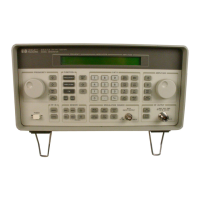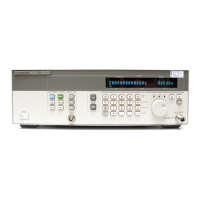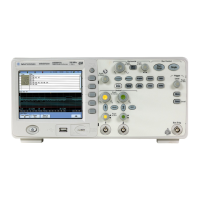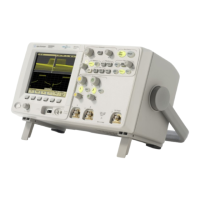35
S:\Hp8960\E1962B CDMA 2000\Pi Release\Reference Guide\Chapters\cdma2000_meas_accprobe_desc.fm
Access Probe Power Measurement Description
Access Probe Power Measurement Description
How is an Access Probe Power measurement made?
The access probe power measurement is a channel power measurement (see “Channel Power Measurement
Description” ) triggered by a rise in RF power detected on the test set’s RF input. The power threshold is
approximately -55 dBm/BW.
Access probe sequences are transmitted by the mobile station during registrations or mobile station originated
calls. Access probe sequences consist of a series of RF power “steps” which increase in power according to the
step size setting until the maximum number of steps is reached or the call processing event completes, for
example when the call connects.
When the test set is making access probe power measurements in the continuous trigger arm state, it will
display the power level of the most recent access probe power measurement.
Considerations when making Access Probe Power measurements
IMPORTANT Access probe power measurements must not be left in Continuous Trigger Arm mode. Attempting
any other measurements while in this state will result in 4 dashes (----).
The access probe measurement setup menu provides control over the following access probe parameters:
• Number of Steps in the access probe sequence (NUM_STEP in the standards).
• Power Step (PWR_STEP in the standards). This parameter specifies the step increase in transmit power
between each access probe within an access probe sequence.
• Maximum Request Sequence (MAX_REQ_SEQ in the standards). This parameter specifies the maximum
number of access probe sequences for an access channel request.
Changing the number of steps and step size will affect the power level displayed if more than one access probe
is transmitted by the mobile station. However, the number of access probes transmitted depends on whether
or not the test set responds by acknowledging the access request, thereby ending the access attempt. To
prevent the test set from responding to the access probe request, turn the Call Limit Mode feature On (key
F10 in Call Parms, 2 of 3 screen). For the GPIB command syntax, see “CALL:CONNected:LIMit[:STATe]” .
To measure only the first access probe and prevent triggering on subsequent access probes, set Trigger Arm in
the Access Probe Power Setup menu to Single and press the START SINGLE hardkey.
When the mobile station performs any type of registration, an access probe power measurement will likely be
triggered. Registrations can occur on mobile station power-up, which is a function of the mobile station’s
programming. Registrations may be requested by the test set at pre-determined time intervals, which will
periodically cause the access probe power measurement to update. To control timer based registrations, access
the Registration Parameters menu (see “C. Set registration parameters.” ). For GPIB syntax information on
timer-based registrations, see “CALL:REGister” .
Input Signal Requirements
See “Input Signal Requirements”

